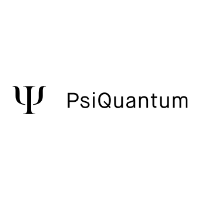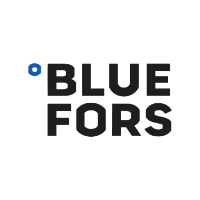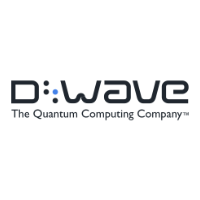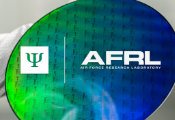Major Development Successes in Diamond Spin Photon Quantum Computers
Major Development Successes in Diamond Spin Photon Quantum Computers
Lower cooling requirements, longer operating times, lower error rates: Quantum computers based on spin photons and diamond promise significant advantages over competing quantum computing technologies. The consortium of the BMBF project SPINNING coordinated by Fraunhofer IAF has succeeded in decisively advancing the development of spin-photon-based quantum computers. On October 22 and 23, 2024, the partners presented the interim project results at the mid-term meeting of the BMBF funding measure Quantum Computer Demonstration Setups in Berlin.
Fermilab and Diraq Partner on DOE-Funded Quandarum Quantum Sensing Project
Fermilab and Diraq Partner on DOE-Funded Quandarum Quantum Sensing Project
Researchers at the Department of Energy’s Fermi National Accelerator Laboratory, along with scientists and engineers at the computer chip manufacturer Diraq, University of Wisconsin-Madison, University of Chicago and Manchester University, have proposed the development of a quantum sensor made of quantum bits called spin qubits in silicon to probe beyond Standard Model physics. Diraq is a global leader in quantum computing technology on silicon, which is essential to the Quandarum project.
Research Achieves Major Milestone in Quantum Annealing
Research Achieves Major Milestone in Quantum Annealing
Led by D-Wave, an international collaboration including researchers from UBC’s Blusson QMI has achieved a major milestone in quantum annealing, pushing computing beyond classical limits to solve complex magnetic material simulation problems for materials discovery. The study was published in Science.
Time Interfaces: The Gateway to Four-Dimensional Quantum Optics
Time Interfaces: The Gateway to Four-Dimensional Quantum Optics
A new study from the University of Eastern Finland (UEF) explores the behavior of photons, the elementary particles of light, as they encounter boundaries where material properties change rapidly over time. This research uncovers remarkable quantum optical phenomena which may enhance quantum technology and paves the road for an exciting nascent field: four-dimensional quantum optics.
Quantum Computers Could Revolutionize Material Development: DLR Quantum Computing Initiative Supported by D-Fine and Planqc
Quantum Computers Could Revolutionize Material Development: DLR Quantum Computing Initiative Supported by D-Fine and Planqc
The consulting firm d-fine and quantum computing manufacturer planqc have been commissioned by the DLR Quantum Computing Initiative (DLR QCI) to advance the development of new materials. Within the DLR QCI project QuantiCoM, they leverage the strengths of quantum computers to enhance simulations of highly complex materials and develop industrially relevant solutions.
Light-Powered Breakthrough Enables Precision Tuning of Quantum Dots
Light-Powered Breakthrough Enables Precision Tuning of Quantum Dots
Researchers at North Carolina State University have demonstrated a new technique that uses light to tune the optical properties of quantum dots – making the process faster, more energy-efficient and environmentally sustainable – without compromising material quality.
Mirror, Mirror Trap the Light: Measuring Invisible Light Waves via Electro-Optic Cavities
Mirror, Mirror Trap the Light: Measuring Invisible Light Waves via Electro-Optic Cavities
Researchers have developed a novel method to trace light fields directly inside cavities, providing in-situ measurement where future field-resolved studies of light-matter interactions will happen.
Diamonds, Gold and the New Alchemy of Materials
Diamonds, Gold and the New Alchemy of Materials
A more feasible transformation, according to Prof. Moshe Ben Shalom, head of the Quantum Layered Matter Group at Tel Aviv University, involves reconfiguring the atomic layers of graphite by shifting them against relatively weak van der Waals forces. This study, led by Prof. Ben Shalom and PhD students Maayan Vizner Stern and Simon Salleh Atri, all from the School of Physics & Astronomy at Tel Aviv University, was recently published in the prestigious journal Nature Review Physics.
Diamonds Are Forever—but Not in Nanodevices
Diamonds Are Forever—but Not in Nanodevices
Now, researchers at JILA, led by JILA Fellows and University of Colorado physics professors Margaret Murnane and Henry Kapteyn, along with graduate students Emma Nelson, Theodore Culman, Brendan McBennett, and former JILA postdoctoral researchers Albert Beardo and Joshua Knobloch, have developed a novel microscope that makes examining these materials possible on an unprecedented scale. The team’s work, recently published in Physical Review Applied, introduces a tabletop deep-ultraviolet (DUV) laser that can excite and probe nanoscale transport behaviors in materials such as diamond.
Innovative Optical Tweezers Technique Discovers Novel Disease Indicators in Aging Animals
Innovative Optical Tweezers Technique Discovers Novel Disease Indicators in Aging Animals
ICFO researchers Dr. Frederic Català-Castro, Santiago Ortiz-Vázquez, Dr. Carmen Martínez-Fernández, Martín Fernández-Campo, Dr. Neus Sanfeliu-Cerdán, led by Prof. Dr. Michael Krieg, along with Dr. Paolo-Antonio Frigeri from Impetux Optics and collaborators from multiple institutes (Center of Genomic Regulation, Institute for Research in Biomedicine and Universitat Pompeu Fabra), have developed a novel optical tweezer method to characterize rheological properties. This approach, published in Nature Nanotechnology, allows for more versatile, simplified measurements of the rheological properties of cells, tissues, and organelles, improving upon previous techniques.


























